
These Names Make Clues is a 1937 detective novel by E.C.R. Lorac, the pen name of the British writer Edith Caroline Rivett. It was the twelfth entry in her long-running series featuring Chief Inspector MacDonald of Scotland Yard. It was written shortly after Lorac had been elected as a member of the Detection Club, and was likely influenced by her experiences there. Originally published by Collins Crime Club, it was reissued in 2021 by the British Library Publishing as part of a group of crime novels from the Golden Age of Detective Fiction.
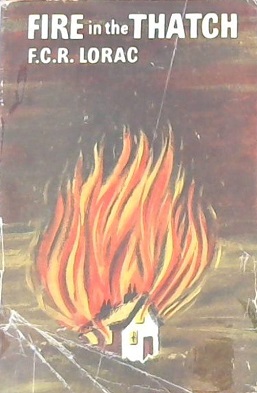
Fire in the Thatch is a 1946 detective novel by E.C.R. Lorac, the pen name of the British writer Edith Caroline Rivett. It is the twenty seventh in her long-running series featuring Chief Inspector MacDonald of Scotland Yard. Originally published by Collins Crime Club, it was reissued in 2018 by the British Library Publishing as part of a group of crime novels from the Golden Age of Detective Fiction.
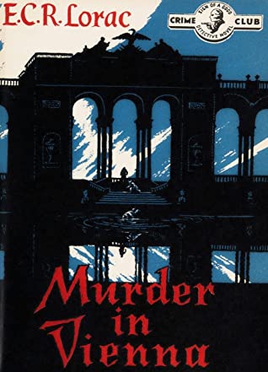
Murder in Vienna is a 1956 detective novel by E.C.R. Lorac, the pen name of the British writer Edith Caroline Rivett. It is the forty second in her long-running series featuring Chief Inspector MacDonald of Scotland Yard, one of the more conventional detectives of the Golden Age of Detective Fiction. It has an unusual foreign setting, post-war Vienna still occupied by the Allies, compared to the rest of the series which generally takes place in London or the English countryside. Maurice Richardson reviewing the novel for The Observer described it as the "usual solid job".
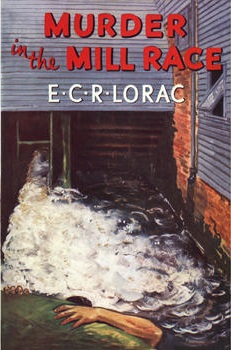
Murder in the Mill-Race is a 1952 detective novel by E.C.R. Lorac, the pen name of the British writer Edith Caroline Rivett. It is the thirty seventh in her long-running series featuring Chief Inspector MacDonald of Scotland Yard, one of the numerous detectives of the Golden Age of Detective Fiction. It was released in the United States under the alternative title Speak Justly of the Dead. Originally published by Collins Crime Club, it was reissued in 2019 by the British Library Publishing as part of a group of crime novels from the Golden Age of Detective Fiction.

Still Waters is a 1949 detective novel by E.C.R. Lorac, the pen name of the British writer Edith Caroline Rivett. It is the thirty second in her long-running series featuring Chief Inspector MacDonald of Scotland Yard, one of the more orthodox detectives of the Golden Age of Detective Fiction.
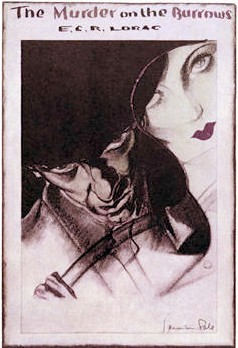
The Murder on the Burrows is a 1931 detective story by E.C.R. Lorac, the pen name of the British writer Edith Caroline Rivett. Her debut novel, it introduced the character of Chief Inspector MacDonald of Scotland Yard who went on to appear in a lengthy series of novels during the Golden Age of Detective Fiction. Although initially named James this is changed to Robert in later books. It takes place around Bideford Bay in North Devon where the author had spent several holidays.

The Sixteenth Stair is a 1942 detective novel by E.C.R. Lorac, the pen name of the British writer Edith Caroline Rivett. It is the twenty second in her long-running series featuring Chief Inspector MacDonald of Scotland Yard, a Golden Age detective who relies on standard police procedure to solve his cases.
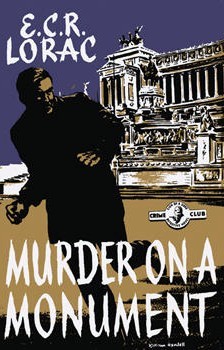
Murder on a Monument is a 1958 detective novel by E.C.R. Lorac, the pen name of the British writer Edith Caroline Rivett. It is the forty-fifth in her long-running series featuring Superintendent MacDonald of Scotland Yard, one of the more conventional detectives of the Golden Age of Detective Fiction. Along with Murder in Vienna, it was one of the rare ventures abroad for the series, which generally took place in London and rural England. It was the penultimate novel featuring MacDonald to be published during Lorac's lifetime.
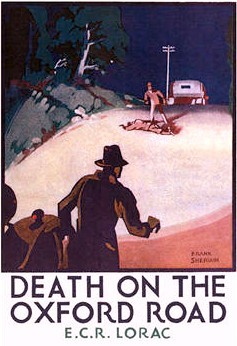
Death on the Oxford Road is a 1933 detective novel by E.C.R. Lorac, the pen name of the British writer Edith Caroline Rivett. It is the fifth book featuring Chief Inspector MacDonald of Scotland Yard who appeared in a lengthy series of novels during the Golden Age of Detective Fiction.

Murder in Chelsea is a 1934 detective novel by E.C.R. Lorac, the pen name of the British writer Edith Caroline Rivett. It is the seventh book featuring Chief Inspector MacDonald of Scotland Yard who appeared in a lengthy series of novels during the Golden Age of Detective Fiction.
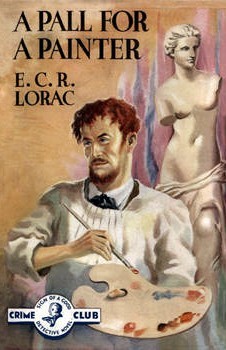
A Pall for a Painter is a 1936 detective novel by E.C.R. Lorac, the pen name of the British writer Edith Caroline Rivett. It is the tenth in her long-running series featuring Chief Inspector MacDonald of Scotland Yard, a Golden Age detective who relies on standard police procedure to solve his cases.

Murder in St. John's Wood is a 1934 detective novel by E.C.R. Lorac, the pen name of the British writer Edith Caroline Rivett. It is the sixth book featuring Chief Inspector MacDonald of Scotland Yard who appeared in a lengthy series of novels during the Golden Age of Detective Fiction.

The Case of Colonel Marchand is a 1933 detective novel by E.C.R. Lorac, the pen name of the British writer Edith Caroline Rivett. It is the fourth book featuring Chief Inspector MacDonald of Scotland Yard who appeared in a lengthy series of novels during the Golden Age of Detective Fiction.

Relative to Poison is a 1947 detective novel by E.C.R. Lorac, the pen name of the British writer Edith Caroline Rivett. It is the twenty ninth in her long-running series featuring Chief Inspector MacDonald of Scotland Yard, one of the detectives of the Golden Age of Detective Fiction who relies on standard police procedure to solve his cases.

A Village Afraid is a 1950 detective novel by the British writer Cecil Street, writing under the pen name of Miles Burton. It was part of a lengthy series of books featuring the detective Desmond Merrion and Inspector Arnold of Scotland Yard.
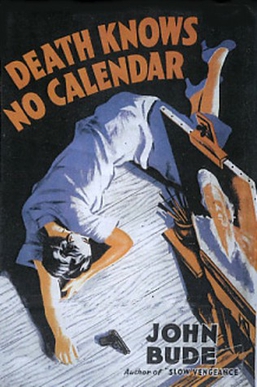
Death Knows No Calendar is a 1942 detective novel by the British writer John Bude. It was a stand-alone novel rather than one featuring his regular detective Superintendent Meredith. In this case the investigation is led by a former army officer Major Boddy. It takes the former of a locked room mystery with a closed circle of suspects, both popular variations of the genre during the period. Originally published by Cassell, in 2020 it was reissued by the British Library Publishing in a single edition with another Bude novel Death in White Pyjamas, as part of a series of republished crime novels from the Golden Age of Detective Fiction.

Death on the Riviera is a 1952 detective novel by the British writer John Bude. It was part of a series featuring Superintendent Meredith of Scotland Yard. While Bude set many of his earlier novels in regional England, after the Second World War they made increasing use of more exotic, Continental settings. In 2016 it was reissued by the British Library Publishing as part of a group of republished crime novels from the Golden Age of Detective Fiction.

The Sussex Downs Murder is a 1936 detective novel by the British writer John Bude. It is the second novel in a series featuring Superintendent Meredith. He has transferred from the Lake District to the Sussex Constabulary based in Lewes between the novels. Much of the novel takes place around the Chanctonbury Ring. In 2014 it was reissued by the British Library Publishing as part of a group of republished crime novels from the Golden Age of Detective Fiction.

The Lake District Murder is a 1935 detective novel by the British writer John Bude. It is the first in a series of novels featuring Chief Inspector Meredith, promoted at the end of case to Superintendent. Set in the Lake District of Northern England, it shows the influence of Freeman Wills Crofts's Inspector French novels by featuring a detective who methodically breaks down the alibis of his suspects. In 2014 it was reissued by the British Library Publishing as part of a group of republished crime novels from the Golden Age of Detective Fiction.
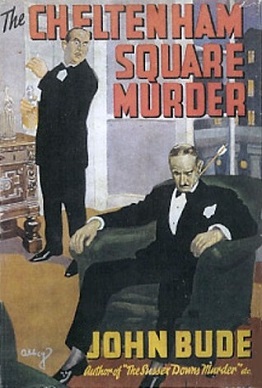
The Cheltenham Square Murder is a 1937 detective novel by the British writer John Bude. It is the third in his series of novels featuring Superintendent Meredith. It features a closed circle of suspects as was popular in the genre of the decade as well as elements of police procedural in the style of the Inspector French novels. in In 2016 it was reissued by the British Library Publishing as part of a group of republished crime novels from the Golden Age of Detective Fiction.




















